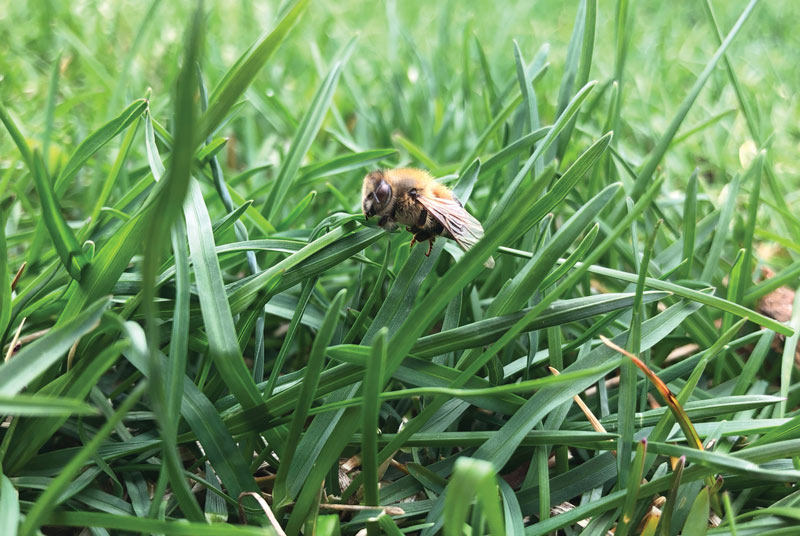
Photo by Audrey Simard
Editor’s note: The following research project is in progress and was featured in the Cutting Edge section of GCM.
Golf course turfgrasses provide a unique water source to pollinators in the form of xylem sap or guttation fluid. This phenomenon, in which plant foliage exudes droplets containing metabolites, nutrients and drinkable water, can be witnessed in all types of grasses but varies in seasonal availability and quantity.
Golf course irrigation practices allow for continuous, bountiful production of turfgrass guttation fluid, providing an optimal water source for pollinators. Unfortunately, water-soluble active ingredients within pesticides can be absorbed and transported systemically in the grass via the xylem; they can then be released back into the environment in concentrated titers via the guttation-fluid release mechanism.
The objective of this work is to determine the bioactivity of commonly applied demethylation inhibitors (DMI) and strobilurin fungicides and DMI plant growth regulators (PGRs) in turfgrass guttation fluid, and to identify the potential hazards they may pose to pollinators (honey bees) and other beneficial insects. We aim to assess and analyze the titers of DMI (fungicides and PGRs) and strobilurin (fungicide) in turfgrass guttation water collected from golf course greens and from rough areas where DMI and strobilurin pesticides are applied.
We will determine the LD50 value of DMI and strobilurin fungicides and of a DMI PGR for European honey bee (Apis mellifera) exposed to guttation water collected from turf treated with the aforementioned pesticides.
— Audrey Simard and R. Chris Williamson, Ph.D., University of Wisconsin-Madison
Teresa Carson is GCM’s science editor.